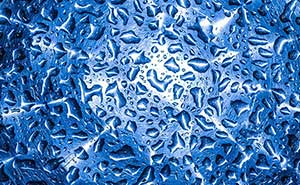No matter what metal surface needs to be painted, successful performance begins with proper cleaning and surface preparation. This article will concentrate on the essential issues in the manufacturing process necessary to ensure successful metal treatment and resultant coating performance. As there are hundreds of surface treatments, we will address the major factors that influence phosphate metal pretreatment which are one of the most widely used pretreatment chemistries. Phosphate treatments are used on steel, zinc and aluminum substrates.
The pretreatment process for metal surfaces provides multiple benefits as it is the foundation of the paint layering system. A quality metal treatment process enhances adhesion between the metal and paint layers by providing a more uniform surface and provides greater corrosion resistance with less undercutting of the paint film.
Table I – Typical Spray or Immersion Process involved in Phosphate Pretreatment
| PROCESS STEP ORDER | PURPOSE | CHEMICALS | POTENTIAL PROBLEM(S) |
|---|---|---|---|
| 1. Cleaning (see Figs I & II) | Remove soils, mill oil, lubricating oil and drawing compounds, dissolution of metal oxide(s), precipitate hard water deposits | Alkaline Cleaner |
|
| 2. Water rinse(s) | Remove residual detergents and deposits | Quality tap water and/or reverse osmosis (R/O) water |
|
| 3. Rinse Conditioner (see Fig III) | For Phosphate- Aids in the development of the proper phosphate crystals on the metal surface | Colloidal Titanium Salts and additives | Destabilization of the Ti Colloid:
|
| 4. Phosphate Step (See Fig IV) | Forms a microcrystalline coating to enhance paint adhesion and corrosion resistance |
|
|
| 5. Rinse | Stops the chemical reaction on the metal surface | Water | Water must be clean |
| 6. Post Rinse | Fill voids in pretreatment | Hexafluorozirconqic acid | Proper control of pH, time , temperature and pressure (spray) |
| 7. Deionized (D.I.) Rinse(s) | Remove any residual chemicals and to provide a clean surface for coating | D.I. Recirculating rinse, followed by a D.I rinse | Carry over of chemicals and other contaminants from previous steps. Must ensure that D.I. water quality is maintained |
To read the rest of the article, written by Ron Lewarchik, please click here to head over to UL Prospector.
__________
Ron Lewarchik, Author of article & President of Chemical Dynamics
As a contributing writer, Ron pens articles on topics relevant to formulators in the coatings industry. He also serves as a consultant for the Prospector materials search engine, advising on issues related to optimization and organization materials within the database.

